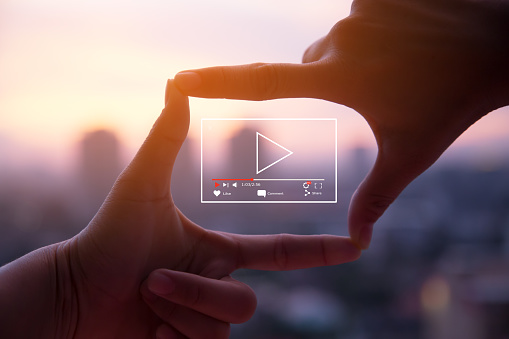by Sherif Awad
Did you know that around 60% of adults in the U.S. go to movies as their preferred form of entertainment? In fact, movie ticket sales have been rising steadily for the past 20 years.
In this article, we’ll explore how cinematography can be an effective tool when planning your next event. From hiring movie screens to utilizing projector technology, we’ll look at some of the best new strategies when it comes to integrating cinema technology into your next event.
If you love going to the movies, then you’ll be interested in the latest cinema technology. From immersive sound systems to laser projection, cinema tech is always evolving to provide a better experience for moviegoers. Here’s a look at some of the latest developments in cinema tech:
Immersive sound: One of the latest trends in cinema tech is immersive sound. This refers to a sound system that envelops the audience in sound, making them feel like they are right in the middle of the action. Many of the latest blockbuster movies are being released in immersive sound formats, so you can experience the movie the way the director intended.
Laser projection: Another new development in cinema tech is laser projection. This offers a number of advantages over traditional projection, including brighter images and a wider color gamut. Laser projection is also becoming more affordable, so more theaters are starting to offer it.
4K resolution: Many newer theaters are now equipped with 4K projectors:
The term “4K” refers to the horizontal resolution of 4,000 pixels. The term “4K” is derived from the horizontal resolution of 4,000 pixels. The 4K standard was developed by the Digital Cinema Initiative (DCI), a consortium of motion picture studios, to define an open standard for digital cinema projection.
4K refers to a horizontal resolution of 4,000 pixels. The 4K standard was developed by the Digital Cinema Initiative (DCI), a consortium of motion picture studios, to define an open standard for digital cinema projection. DCI 4K is 4096×2160 pixels (256:135, about a 1.9:1 aspect ratio). The 4K standard has been adopted by the DCI, SMPTE, and other standards bodies.
4K is the horizontal resolution of 4,000 pixels. The term “4K” is derived from the horizontal resolution of 4,000 pixels.
Movie screens can be a great addition to any event, big or small. They can be used for presentations, movies, or even just for decoration. Hiring a movie screen can be a great way to add a touch of class to your event and make it more memorable for your guests.
Nowadays, it’s all about big screen and projector when it comes to live streaming. Everyone wants to have the best quality live stream with the biggest and brightest screen. Here are a few tips to make your live stream look great on a big screen.
1. Make sure your live stream is high quality. This means having a good internet connection and using a webcam or other high quality camera.
2. Use a projector screen or whiteboard to project your live stream. This will make it easier for viewers to see your live stream.
3. Make sure the audio of your live stream is clear. This means using a microphone and having good speakers.
4. Use a tripod to keep the camera steady. This will prevent the live stream from being shaky.
5. Make sure the lighting is good. This will ensure that viewers can see the live stream clearly.
Following these tips will help you have a great looking live stream on a big screen.
where you are – with virtual reality. It’s an immersive experience that puts you at the center of a story, game, or experience. And with Oculus Rift, it’s never been easier to jump into the action.
We’ve all been there – at the edge of our seats during an intense movie scene or feeling like we’re part of the action in our favorite video game. But what if you could actually step inside that world and be part of the story? With virtual reality, you can.
Oculus Rift is a virtual reality headset that lets you do just that. Rift uses cutting-edge display technology to provide an immersive, realistic experience that puts you at the center of the action. And with our easy-to-use Oculus SDK, developers can quickly build and launch their own virtual reality experiences for Rift.
Whether you’re exploring the depths of an ancient temple or flying through the canyons of an alien world, Rift lets you experience it like never before.
3D projection is a process of projecting a three-dimensional image onto a two-dimensional surface. It is often used in theaters, planetariums, and other venues where a three-dimensional image is desired.
A 3D projector uses a beam of light to project an image onto a screen. The image is then viewed with special glasses that allow the viewer to see the image in three dimensions.
3D projection can provide a more immersive experience than traditional two-dimensional projection. It can also be used to create special effects, such as the appearance of objects floating in mid-air.
3D projection is not without its drawbacks, however. The technology can be expensive, and the special glasses required to view the images can be uncomfortable for some viewers. Additionally, the images projected by a 3D projector can sometimes appear blurry or distorted.

